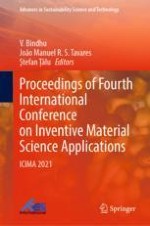The volume is a collection of best selected research papers presented at the 4th International Conference on Inventive Material Science Applications (ICIMA 2021) organized by PPG Institute of Technology, Coimbatore, India during 14 – 15 May 2021. The book includes original research by material science researchers towards developing a compact and efficient functional elements and structures for micro, nano and optoelectronic applications. The book covers important topics like nanomaterials and devices, optoelectronics, sustainable electronic materials, nanocomposites and nanostructures, hybrid electronic materials, medical electronics, computational material science, wearable electronic devices and models, and optical/nano-sensors.
